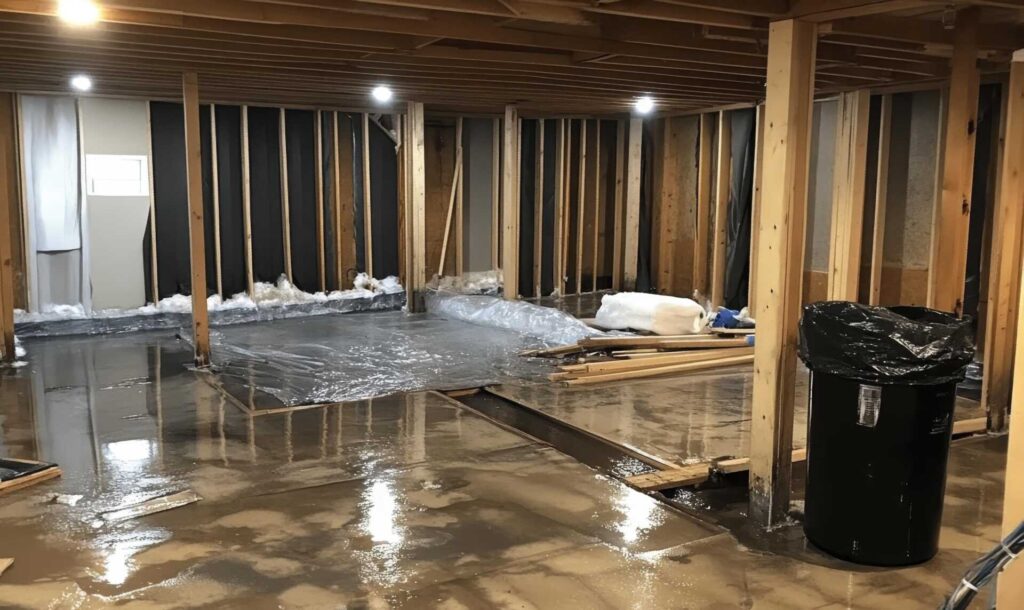Contents
To achieve a lush, thriving lawn, understanding the intricacies of soil aeration is essential. You can discover the key to unleashing your grass’s full potential by exploring the fundamental principles behind this practice. Uncover how proper aeration techniques can revolutionize your lawn care routine and elevate your green space to new heights of health and vitality. Stay tuned to discover the expert tips and strategies to transform your grass into a masterpiece.
Key Takeaways
- Proper aeration enhances root growth and nutrient absorption.
- Regular aeration prevents soil compaction and promotes deep root systems.
- Timing aeration in spring or fall aids grass recovery.
- Monitor soil for signs of compaction to maintain a healthy lawn.
- Combine aeration with overseeding for optimal grass health.
Importance of Soil Aeration
To maximize the health of your grass, understanding the essential importance of soil aeration is key. Soil aeration, also known as soil oxygenation, plays a pivotal role in promoting healthy root development in your lawn.
When soil becomes compacted or densely packed, it restricts the flow of oxygen to the grassroots. This lack of oxygen can hinder root growth and overall plant health. By aerating the soil, you create channels for air, water, and nutrients to penetrate deep into the ground, reaching the grassroots where they’re needed most.
Root development is directly linked to soil aeration. When properly aerated soil, roots can easily expand and grow deeper into the ground. This allows the grass to access more water and nutrients, resulting in a stronger and more resilient lawn.
Inadequate soil oxygenation can lead to shallow root systems, making the grass more susceptible to drought, diseases, and other stressors. Therefore, prioritizing soil aeration is fundamental in fostering robust root development and ensuring the overall health of your grass.
Benefits of Lawn Aeration
What are the measurable advantages of incorporating lawn aeration into your grass maintenance routine? Lawn aeration offers various benefits that directly enhance turf health. Understanding these aeration benefits can help you maximize your lawn’s health and vibrancy.
Improved Oxygen Circulation: Aeration allows for better oxygen exchange between the soil and the atmosphere, promoting healthier root growth.
Enhanced Nutrient Absorption: By loosening compacted soil, aeration enables roots to access essential nutrients more effectively, leading to lush, green grass.
Increased Water Infiltration: Aeration helps prevent water runoff by creating pathways for water to penetrate the soil, reducing puddling and promoting even hydration.
Enhanced Thatch Decomposition: By breaking down excessive thatch layers, aeration encourages microbial activity, fostering a balanced ecosystem for peak turf health.
Techniques for Effective Aeration
When it comes to maximizing grass health through soil aeration, understanding the difference between core and spike aeration techniques is essential.
You should consider the timing and frequency of aeration to guarantee best results.
These points play a significant role in enhancing soil structure and promoting healthy grass growth.
Core Vs. Spike Aeration
With soil aeration techniques, understanding the differences between core and spike aeration is crucial for achieving peak grass health. Core aeration involves removing soil plugs from the ground, while spike aeration uses solid tines to create holes in the soil.
Here are some key points to take into account when comparing core and spike aeration:
- Aeration Depth: Core aeration typically penetrates the soil more effectively than spike aeration, allowing for better air and water movement.
- Compaction Relief: Core aeration helps reduce soil compaction by pulling out cores, while spike aeration may further compact the soil.
- Thatch Penetration: Core aeration helps break up thatch layers, promoting healthier grass growth, whereas spike aeration may not effectively address thatch buildup.
- Root Development: Core aeration encourages deeper root growth, leading to stronger, more resilient grass, while spike aeration may not provide the same level of root stimulation.
Timing and Frequency
To optimize grass health through soil aeration, understanding the ideal timing and frequency for aeration practices is crucial for maximizing the benefits to your turf. The best timing for aeration varies based on the type of grass and soil conditions.
For cool-season grasses like Kentucky bluegrass or fescue, the most suitable time for aeration is early fall or spring, when the grass is actively growing. Warm-season grasses such as Bermuda grass or Zoysia grass benefit most from aeration in late spring to early summer.
The frequency of aeration depends on the soil compaction level and traffic on the lawn. Typically, yearly aerating is sufficient for most lawns, but heavily compacted soils may benefit from semi-annual aeration. Consider seasonal factors to make sure you time your aeration for maximum grass health.
Best Time to Aerate Your Lawn
For ideal results in maintaining a healthy grass lawn, considering the seasonal weather patterns can help determine the best time to aerate your lawn. Aeration timing is essential for enhancing lawn health and ensuring peak growth. Here are some key points to guide you on the best time to aerate your lawn:
- Spring or Fall: These seasons are ideal for aeration as the grass is actively growing, allowing it to recover quickly from the aeration process.
- Avoid Summer: Aeration during summer can stress the grass due to high temperatures, potentially damaging its health.
- Moist Soil: It’s best to aerate when the soil is slightly moist but not overly wet to facilitate easier penetration and reduce strain on the grassroots.
- Cool Weather: Aerate when temperatures are milder to prevent excessive heat stress on the grass, promoting better recovery post-aeration.
Considering these factors will help you choose the best time to aerate your lawn, ensuring maximum benefits for your grass’s health.
Equipment Needed for Aeration
Having the right equipment is essential for aerating your lawn. Aeration tools come in various forms, from manual to motorized.
Selecting the appropriate equipment based on your lawn’s size and condition, as well as maintaining and caring for it properly, are vital steps to guarantee effective aeration.
Aeration Tools Overview
Opt for a variety of specialized tools to effectively aerate your soil and enhance grass health. When comparing aeration tools, consider the benefits each provides to make an informed decision.
Here are some key tools to aid you in the aeration process:
Spike Aerators: These tools are ideal for compacted soils but may cause further soil compaction due to the spikes.
Plug Aerators: Known for removing small cores of soil, promoting better air circulation and nutrient absorption.
Slice Seeders: Helpful for overseeding and aeration simultaneously, encouraging new grass growth.
Liquid Aeration Solutions: These can be used to break up compacted soil without the need for mechanical tools, offering a convenient alternative.
Choose the right combination of tools based on your soil’s specific needs to achieve optimal results.
Selecting Proper Equipment
To ensure effective soil aeration and promote grass health, selecting the appropriate equipment is essential for achieving successful results.
When evaluating equipment for aeration, the aeration machine plays a vital role in ensuring that the soil receives sufficient oxygen, nutrients, and water for ideal grass growth. The type of aeration machine chosen can significantly impact soil health by alleviating compaction, improving root development, and enhancing overall turf quality.
Factors to consider when selecting an aeration machine include the size of the lawn or turf area, the type of soil present, and the specific needs of the grass species being cultivated.
Maintenance and Care
Proper maintenance and care of the aeration equipment are essential for ensuring consistent and effective soil aeration to support ideal grass health. Paying attention to the equipment is vital for maximizing grass health through soil aeration.
Here are some key factors to keep in mind for maintaining and caring for your aeration tools:
- Regularly clean the aeration equipment to prevent soil buildup and ensure peak performance.
- Sharpen or replace tines as needed to ensure proper aeration depth and quality.
- Store the equipment in a dry place to prevent rust or damage.
- Follow manufacturer’s guidelines for maintenance to extend the equipment’s lifespan and effectiveness.
Tips for Maintaining Aeration Results
Consistency in maintenance practices is important to maintaining the aeration results achieved in your soil and securing long-term grass health and vitality. Aeration maintenance involves regular monitoring of soil compaction levels and addressing any issues promptly. Keep an eye out for signs of soil compaction, such as pooling water, slow grass growth, or difficulty inserting a probe into the ground. If these issues arise, consider aerating the soil again or using alternative methods like vertical mowing to alleviate compaction.
To maximize the long-term effects of aeration, it’s essential to follow a proper maintenance schedule. This includes overseeding the lawn to promote new grass growth, watering deeply but infrequently to encourage deep root development, and fertilizing as needed to provide essential nutrients to the grass. Regularly inspect the lawn for any signs of stress or compaction and address them promptly to maintain healthy soil and grass growth.
Wrap-Up
Prioritizing regular soil aeration is essential for maximizing grass health and promoting strong root development.
Addressing soil compaction through techniques like core aeration guarantees ideal air, water, and nutrient circulation for vibrant turf.
Remember, an ounce of prevention is worth a pound of cure for maintaining a healthy lawn. So grab that aerator and prepare to give your grass the TLC it deserves!




